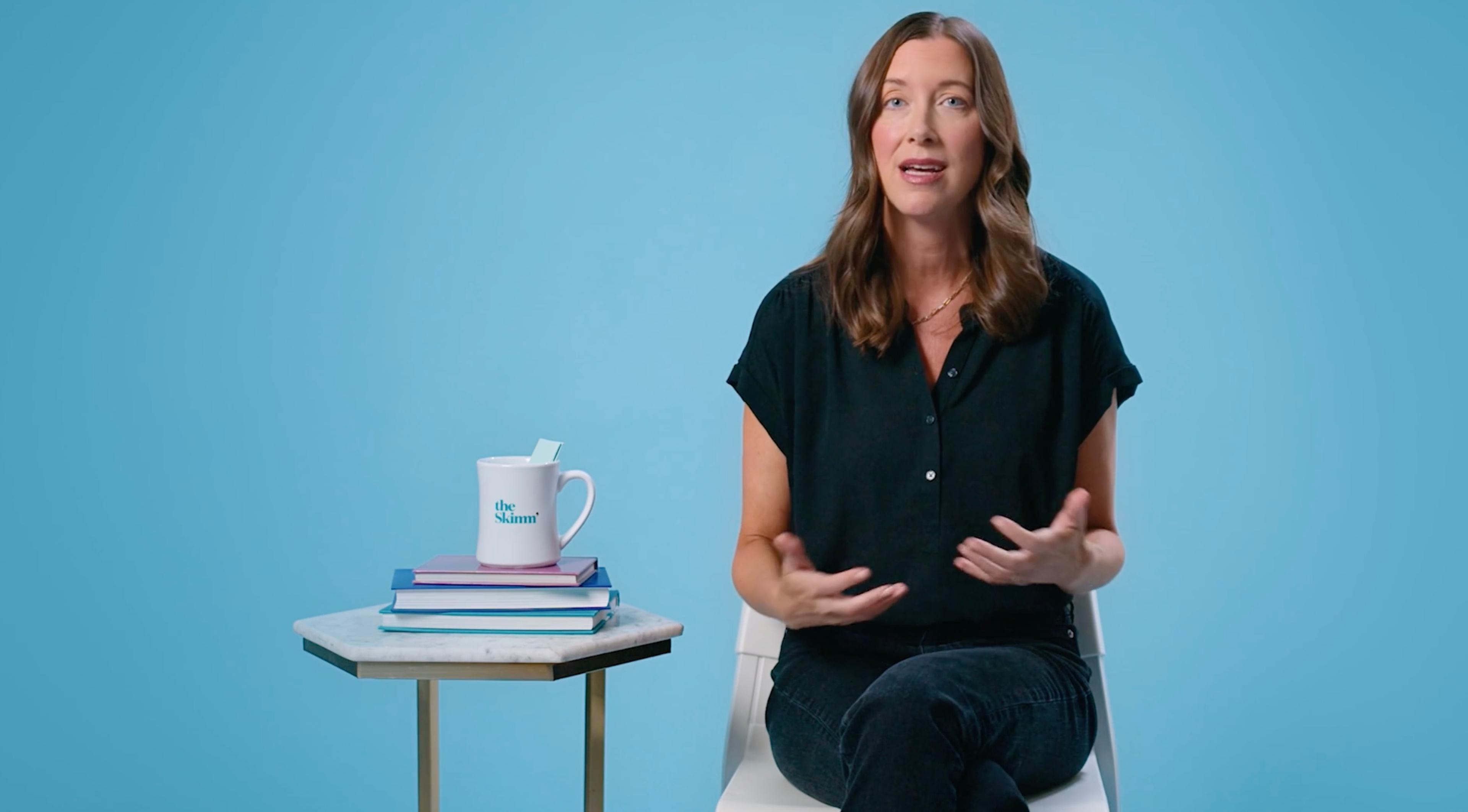


I’ve always considered ARFID to be an eating disorder outlier—the one that doesn’t have much in common with the others. But once I got to interviewing experts and diving into the research, I realized that ARFID has more similarities to other diagnoses than I thought. And there’s one similarity that’s perhaps the most critical, which is that lasting recovery requires ongoing attention and conscious participation, especially in those first weeks and months following treatment.
“ARFID recovery isn’t a one-and-done thing. It’s like tending a garden: you can’t just stop watering once things start growing,” explains Tracy Colin, MS, RD, LDN. Much of ARFID treatment is food exposure work, where patients and loved ones develop skills to try and include new foods, increase flexibility, and confront food fears. “Keeping up with variety and exposure is what helps those wins stick and keeps progress blooming for the long haul,” Colin adds.
Read on to explore why it’s so important to continue food exposures at home, and expert-backed ways to do so.
Why you need to continue food exposure work after ARFID treatment
While you can make significant progress toward increasing food variety during treatment, it can happen at a slow pace, meaning there’s often more work to be done after discharge.
In fact, Michelle Jones, PhD, licensed psychologist and clinical instructor at Equip, says it can take ten or more tries of a new food to become comfortable with it. “Patients can successfully end treatment without having tried every food they are willing to explore or challenging every difficult eating-related situation in session, which means there may be continued exploration of novel foods and anxiety-provoking situations after formal treatment ends,” she explains. “There may still be benefits to adding new foods to improve nutritional intake, reduce anxiety, or improve psychological or social functioning even after the primary goals of treatment have been achieved, but the patient and family may not need professional support to accomplish these tasks.” Jones says the ideal scenario is one in which patients and their families have the tools to continue working on food variety on their own, which helps keep the momentum from treatment going.
Sometimes, patients and families can (understandably) feel burnt out by the end of treatment and want to take a break—but this can lead to setbacks. “Without realizing it, you might find yourself falling back into familiar patterns, letting the new foods you tried during treatment slip away,” says ARFID registered dietitian Ana Pruteanu, MS RDN LDN CEDS-C. “When we stop eating a food, it can start to feel unfamiliar again, which makes it harder to eat later on, and that’s why it’s so important to keep practicing after treatment.”
Like other eating disorders, ARFID’s potential consequences include serious issues like malnutrition, nutrient deficiencies, stunted growth, anxiety, and depression, so it’s critical to continue the recovery process after discharge to continue healing. Plus, research shows that ARFID can lead to feeling a loss of freedom and inability to participate in social activities, and continued food exposure work can bring greater comfort and ease in social settings and more flexibility while out in the world. “Intense treatment doesn’t cover all real-world scenarios,” Colin says, “so as you continue to expand on food varieties, you’re also reducing anxiety in unpredictable food environments.”
How to continue food exposures at home, according to experts
Now that you know why it’s so important to keep increasing food variety post-discharge in ARFID recovery, let’s explore some of the most helpful ways to do so.
Start by keeping foods from treatment regular.
The first step is less about increasing exposures and more about maintaining the progress you’ve made from previous exposures. To do this, it’s important to keep all the foods you introduced during treatment in regular rotation. Pruteanu recommends incorporating such foods at least every week, “as ongoing practice to keep these foods familiar and comfortable.” The reason for this is that if too much time passes without eating a previous fear food, it could become hard to eat again.
Take small steps.
Keep in mind that food exposure doesn’t necessarily mean eating a new food right out of the gate. In fact, Pruteanu suggests interacting with new foods in non-eating ways at first, taking the pressure off of eating them, and going at your own pace. “You might start by preparing or cooking a new food for a friend or family member,” she says. “Even just touching the food, smelling it, or noticing how it changes when it’s cooked can help make it feel more familiar.” Additionally, Jones suggests working on increasing flexibility with foods you or your loved one are already eating, trying new preparations or combining it with new foods.
Take breaks when you need.
Sometimes, expanding food variety can feel like way too much, which may be a sign to take a break from expansion for a bit. Instead, focus on the foods you or your loved one can eat with relative ease consistently and adequately, giving yourself space until stress levels are lower and it feels manageable to begin progressing again. “There will be times when it just feels too overwhelming, or when you might experience sensory overload,” Pruteanu says. “Give yourself permission to pause and take care of yourself.”
Connect with your personal “why.”
Take some time to quiet the expectations of your treatment team or loved ones and connect with your own desires and reasons for increasing food variety. “Maybe it’s to feel more confident at social meals, to have more energy, or to make eating feel less stressful,” Pruteanu says. “Focusing on your own motivations can make the process feel more empowering and less pressured, and finding your ‘why’ is key to sticking with it after treatment, especially when it gets tough.”
Create a relapse prevention plan.
Relapse can be a normal part of recovery, so it’s important and helpful to have a concrete resource to turn to when the going gets tough. “Creating a relapse prevention plan is what helps to ensure long-term success for my patients by helping them think about any potential obstacles that may impact their ongoing relationship with food,” Colin shares. A prevention plan can include anything you feel may be helpful to you or your loved one during hard times, including a meal plan or structure, grocery lists, back-up meal and snack ideas, a safe foods list (and perhaps a list of successfully added foods), potential triggers and warning signs with coping tools to navigate them, recovery motivators, and a list of people to reach out to if for more support.
Consider working with an outpatient team.
Working with outpatient providers, including a therapist and dietitian, can help make your or your loved one’s transition out of treatment easier. They can guide you as you continue to explore new foods and navigate any challenges that arise. “Having a team in your corner can make the journey feel less overwhelming and more supported,” Prutaneau explains. It’s typical to meet with outpatient providers weekly after treatment and then slowly taper appointments as you’re ready, but how often you see them will depend on your or your loved one’s specific recovery needs and desires. Be sure to choose providers who are experienced in ARFID.
Keep some sort of journal to track progress.
In treatment, you or your loved one may have created a food hierarchy list with your dietitian to help sort foods from safest to scariest, and it can be helpful to continue working through this list post-discharge. It may also help to create lists of foods that you or your loved one have tried before but no longer eat, so you can circle back to them. As you find foods that you or your loved one are willing to eat, note sensory factors like taste, texture, and smell, which can help guide you to your next new food. Finally, consider making a food group chart, where you name foods within each food group (such as carbs, fats, proteins, fruits and veggies) that you or your loved one eat or are considering eating, to help you work towards a well-rounded diet.
Use strategies from treatment.
There are several evidence-based therapeutic approaches for ARFID, including cognitive behavioral therapy, family-based treatment, and exposure and response prevention—all of which come with specific strategies for new food exposures that you’re likely familiar with at this point. Even though treatment is over, you can continue using in-session and at-home practice strategies, says Jones, who recommends applying them to real-life situations to try new foods.
Use mealtime tools to reduce anxiety.
Since trying new foods can feel scary and cause significant anxiety, focus on creating as much safety as possible, before, during, and after food exposures. While what helps evoke emotional safety is highly personal, some common tools include breathing practices (like deep diaphragmatic breathing or extended exhale breathing), having safe objects (like a comforting photo or blanket), having a beloved pet nearby, having healthy distractions like conversations with a friend, or listening to relaxing music (in fact, research shows music therapy may help with pre-meal anxiety in recovery).
Use food chaining.
You may already be familiar with a tool called food chaining, which Colin describes as a “gentle approach to introducing more foods without the overwhelm,” and which you can continue at home. It’s a process of gradually adding variety to foods that already feel safe (e.g. having if you like french fries, trying waffles fries, or if you like white rice, trying brown rice). “It helps build a bridge from the foods that are successfully incorporated in your diet to new foods by providing exposure to similar foods with some variation,” Tracy explains.
Focus on fostering positive eating experiences.
Research shows that parents’ efforts to create low-pressure and pleasurable eating experiences is helpful in expanding food variety, improving attitudes towards food, and minimizing social discomfort around eating. On the other hand, parents exerting forcefulness and food demands around the table is generally unhelpful and unproductive. Some ways to create a more positive experience include practicing gentleness and compassion, talking about lighthearted topics (not food), and playing music that everyone at the table enjoys.
Have reasonable expectations.
Keeping expectations in check is helpful for both the person with ARFID and their loved ones. “It’s important to continue to focus on objective experiences of tasting and incorporating new foods, and be careful to avoid placing expectations on the patient to like new foods,” Jones advises. “Many patients may continue to expand variety slowly and may continue to have a more limited variety than their peers and other family members.”
ARFID resources
If you or your loved one need extra support in recovery post-discharge, the experts featured in this article recommend several valuable resources to explore:
- List of ARFID providers (dietitians, therapists, doctors, feeding specialists, and recovery coaches) from ARFID Collaborative
- ARFID support groups for patients and families from ARFID Collaborative
- Bridge the Food Gap: An ARFID Recovery Workbook by Amanda Garant, RD and Valerie Weesner, PhD
- ARFID: Avoidant/Restrictive Food Intake Disorder: A Guide for Parents and Carers by Rachel Bryant-Waugh
- The Picky Eater’s Recovery Book: Overcoming Avoidant/Restrictive Food Intake Disorder by Jennifer J. Thomas
Wherever you are on your food exposure journey, remember to acknowledge all the progress you or your loved one have made so far, be compassionate with yourself, and lean on support when you need it. ARFID recovery is a journey, but with the skills and knowledge you gained in treatment, you have what it takes to continue down the right path.
- Willmott, E., Dickinson, R., Hall, C., Sadikovic, K., Wadhera, E., Micali, N., Trompeter, N., & Jewell, T. (2023). A scoping review of psychological interventions and outcomes for avoidant and restrictive food intake disorder (ARFID). International Journal of Eating Disorders, 57(1). https://doi.org/10.1002/eat.24073
- Knedgen, M. M., & Starr, R. A. (2024). A tradeoff between safety and freedom: Adults’ lived experiences of ARFID. Journal of Eating Disorders, 12(1). https://doi.org/10.1186/s40337-024-01071-3
- Longer Exhalations Are an Easy Way to Hack Your Vagus Nerve. (2019). Psychology Today. https://www.psychologytoday.com/us/blog/the-athletes-way/201905/longer-exhalations-are-an-easy-way-to-hack-your-vagus-nerve
- Ceccato, E., & Roveran, C. (2022). Effects of Music Therapy in the Reduction of Pre-Meal Anxiety in Patients Suffering from Anorexia Nervosa. Brain Sciences, 12(6), 801. https://doi.org/10.3390/brainsci12060801
- Białek-Dratwa, A., Szymańska, D., Grajek, M., Krupa-Kotara, K., Szczepańska, E., & Kowalski, O. (2022). ARFID—Strategies for Dietary Management in Children. Nutrients, 14(9), 1739. https://doi.org/10.3390/nu14091739
- Kim, Y. K., Di Martino, J. M., Nicholas, J., Rivera‐Cancel, A., Wildes, J. E., Marcus, M. D., Sapiro, G., & Zucker, N. (2021). Parent strategies for expanding food variety: Reflections of 19,239 adults with symptoms of Avoidant/Restrictive Food Intake Disorder. International Journal of Eating Disorders, 55(1), 108–119. https://doi.org/10.1002/eat.23639







